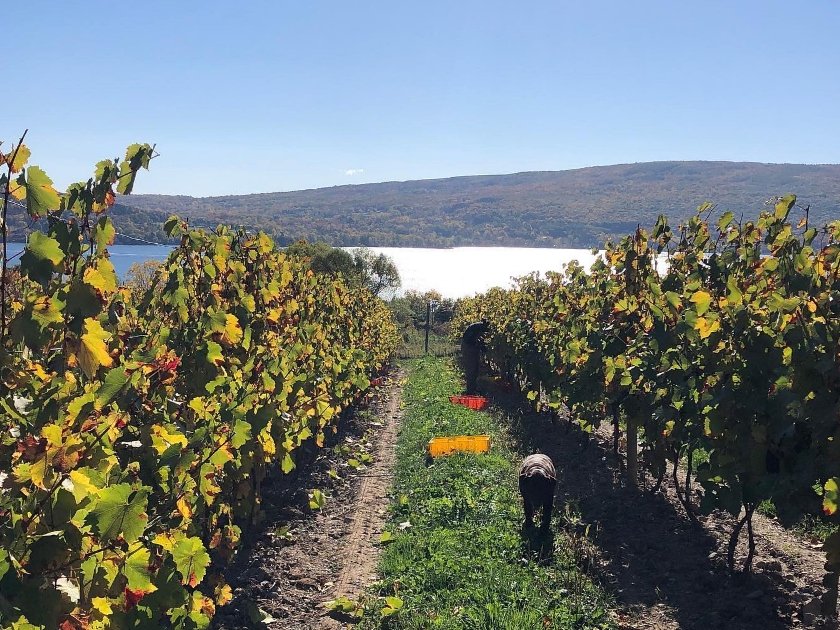Expand Your Vino Vocabulary
Welcome to the Canandaigua Lake Wine Trail, where the journey of wine discovery is not just about tasting but also about learning and appreciating the art of winemaking. One of the joys of wine exploration is understanding the language that describes it. Today, let’s enhance your wine trail experience by diving into some essential wine terms.
Tannins: The Backbone of Red Wines
When you take a sip of a bold red wine and feel a dry, puckering sensation in your mouth, you’re experiencing tannins. These natural compounds, found mostly in red wines, contribute significantly to the wine’s structure and texture. Tannins are derived from grape skins, seeds, and stems, as well as from oak barrels used in aging. They play a crucial role in the aging potential and taste profile of the wine.
Body: Feeling the Weight
The term ‘body’ describes the weight and fullness of wine in your mouth. It’s akin to the difference between the feel of skim milk (light-bodied), whole milk (medium-bodied), and cream (full-bodied) in your mouth. The body of a wine is influenced by several factors, including alcohol content, grape variety, and winemaking practices. Understanding a wine’s body can help you pair it better with food and choose a wine that suits your taste preference.
Terroir: The Taste of Place
Terroir, a French term without a direct English translation, refers to the unique combination of natural factors like soil, climate, and topography where grapes are grown. It’s the essence of the place that is imparted to the wine. Terroir is what makes each wine unique, giving it character and a sense of place. It’s a concept that celebrates the diversity of wine and the influence of nature in its creation.
Finish: The Lasting Impression
After you swallow a wine, the taste that lingers in your mouth is known as the finish. A long finish, where the flavors persist for several seconds or even minutes, is often an indicator of a wine’s quality. The finish can reveal subtle flavors not immediately apparent and is a key aspect of a wine’s complexity.
Vintage: The Year of the Grape
Vintage refers to the year the grapes were harvested and is a crucial factor in a wine’s character. It reflects the climatic conditions of that year, which can greatly influence the quality and flavor profile of the wine. A good vintage can elevate a wine, while a challenging one can test a winemaker’s skill in creating a balanced and enjoyable wine.
Conclusion
As you traverse the Canandaigua Lake Wine Trail, armed with these key wine terms, you’re set to deepen your appreciation and understanding of the wines you taste. Impress your friends or our friendly vintners with your newfound wine lingo, and savor each sip with a bit more insight. Remember, wine is not just a drink; it’s a story in a glass, waiting to be explored and enjoyed.
